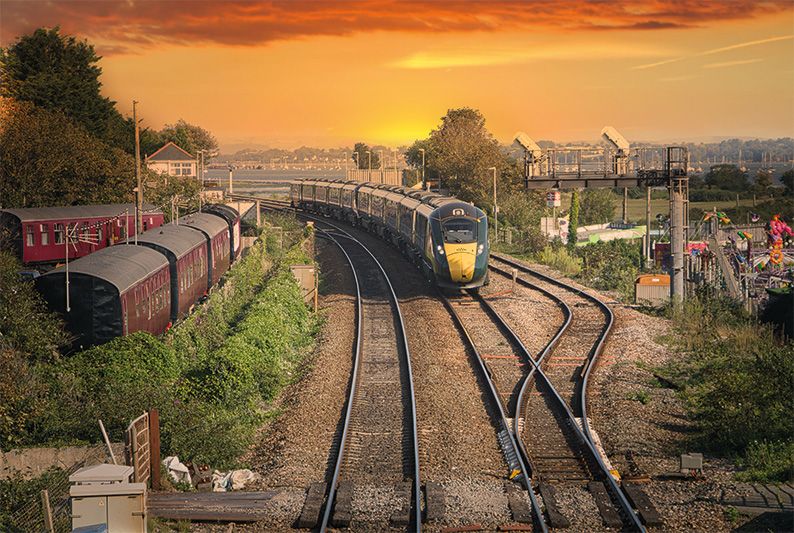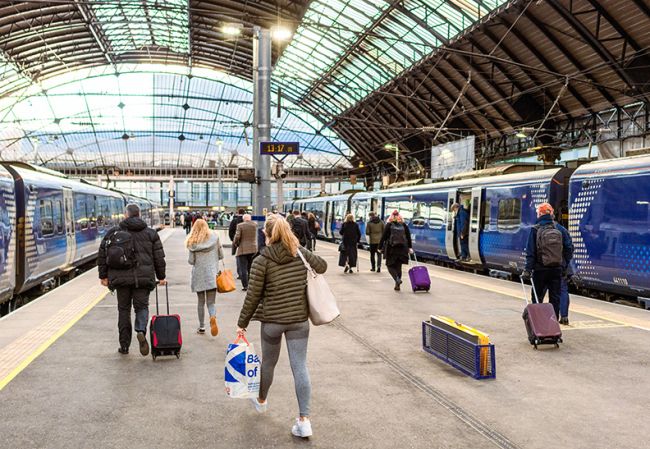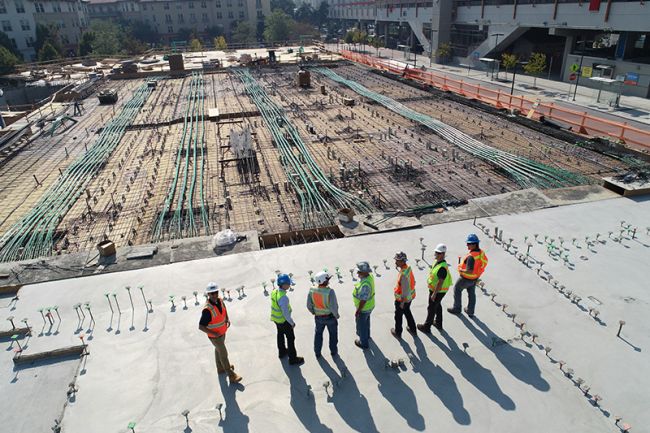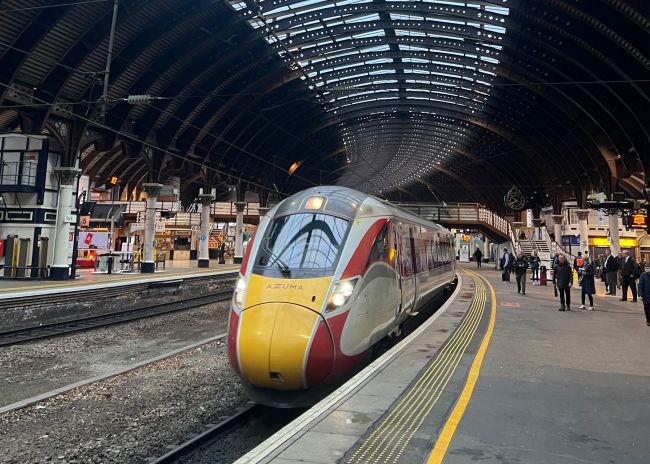Passenger rail in the Local Transport Plan – the art of the possible
Local Transport Plans (LTPs) are a well-established part of the planning process in England and Wales.

Local Transport Plans (LTPs) are a well-established part of the planning process in England and Wales. But while their role in supporting development of the highway infrastructure for private cars, buses and sustainable modes is well understood, their role and success in securing improvements to the heavy rail network, which is an integral part of the local transport network for many areas, is perhaps less clear. With new guidance anticipated from the UK government on how local authorities should approach LTPs, it is timely to consider how best rail can figure in plans.
The challenge lies, not necessarily with the ambition or intention of previous LTPs, but with the ability to navigate the complexity of the rail industry. Successfully securing funding for, and delivering, rail enhancements is fraught with obstacles – not just for local authorities, but for the industry, sub-national transport bodies and central Government too. Particular challenges include:
- Rail infrastructure can be relatively expensive, making it difficult to identify investment that is both value for money and affordable within a local transport context;
- Realising benefits requires agreement with Train Operating Companies and Franchising Bodies to change services provision, which can require negotiation for ongoing funding; and
- The rail network is congested, and making local service changes can often have consequences outside of the local area, over which the local authority can have very little control.
Where is rail strongest?
While these challenges can be frustrating, and debated, there is only so much that can be done to solve them by local authorities. What is critical, in the short term at least, is to work both within the constraints and the industry structure as effectively as possible, and to focus where rail is strongest.
The objective nature of the LTPs and their development process requires that multi-modal opportunities are identified and considered against strategic objectives, including environmental and growth requirements. Helpful, in the context of rail (and indeed making the case for investment more widely), this robust process can aid in ensuring that there is a strong strategic argument for rail investment.
As part of this process, there is a need to ensure that the identification of rail investment is targeted to where it can both make the biggest impact in the local transport context, where the investment matches rail's strengths and where funding is likely to be available. In essence, there is a need to be pragmatic, prepared and to focus on promoting rail where it is the best solution to the identified problems. That is likely to include scenarios where:
- The nature of the market being served, and the existing operations in the area, are such that the economics of the rail solution are likely to be viable. This could include scenarios where the intervention will serve:
- Higher volume strategic journeys, for example, commuting or weekend leisure travel into city and town centres, where peak highway traffic can make rail quicker and where the volumes can be economical for rail.
- Longer distance intercity or interregional type journeys, where the distance can give rail journey time advantages and where the higher revenue is more economic for rail – though noting, of course, that these types of interventions may be more regional in nature, and so not defined by a single authority’s LTP.
- Other markets where there is an opportunity to do so within the existing service provision or where there is an opportunity to service multiple markets and address multiple objectives.
- Better use can be made of existing service provisions, for example, by improving access to rail or interchange between rail services, for example, through new or improved stations.
- The interventions can support or unlock wider economic impacts, such as allowing sustainable economic or housing growth that supports the area's wider industrial strategy or development plans.
What is affordable and deliverable?
The hard reality is that realising any rail enhancement is dependent on affordable and deliverable solutions being identified, for development and infrastructure investment, as well as potentially funding longer-term service provision.
Affordability is the biggest single challenge facing the rail industry at the moment. Setting aside local political and public aspirations for enhanced rail services, the industry is currently facing a generational challenge from the UK Government to increase efficiency and reduce financial commitments, meaning that in some places, authorities and stakeholders are still working to restore their pre-covid services levels, rather than seeking further enhancements.
The Prime Minister's announcement to divert HS2 funding to supporting local transport is encouraging, for local transport at least. The details are still being understood, though note it appears that the policy change supports development and infrastructure investment for rail projects which are already identified. The availability of funding for the development of service enhancements needs to realise benefits, and for new longer-term rail development, remains uncertain – and therefore, LTP development must remain cognisant of the wider funding challenges.
It is, therefore, crucial that any proposal to enhance rail has clearly identified funding. Securing funding may mean that the interventions identified are tailored to the funding sources available. This may well mean focusing on non-industry funding sources such as City Region Sustainable Transport Settlements, but accepting that the nature of these funding streams will shape the nature of the interventions that can be delivered. As in previous rounds of LTPs, a focus on off-rail network interventions such as integration along with first and last-mile access could be fruitful. It is also important the LTP’s seek to make the most from new mobility modes, including micromobility, and from regulatory changes, such as bus franchising, to make sure networks are well integrated.
Having a mindset to identify interventions which are deliverable will, obviously, ensure the realisation of the overall LTP. The rail industry has very limited spare infrastructure capacity to introduce or change service provision, and it is highly likely that fundamental frequency enhancements will trigger material additional infrastructure needs or trigger poor performance down the line. Where such rail interventions are clearly defendable as the best solution, then they should, of course, be pursued. But there may be a better focus on smaller marginal service enhancements, such as parts of the network where off-peak and weekend leisure service enhancements can be delivered with limited additional industry resources. Similarly, opportunities to tailor enhancements to other industry investments, such as renewals and maintenance, may yield deliverable and efficient opportunities. Finally, as discussed above, opportunities around access and interchange, which may not directly affect the rail network at all, are likely to be attractive.
How can Steer help?
Steer is uniquely well equipped to help local authorities with developing rail strategy and interventions within the LTP context – blending experience of detailed rail development expertise with DfT and Network Rail with a host of experience across vison-led planning, data analysis, new mobility solutions, scenario planning and a demonstrable track record of using these to support Local Transport Plan development. We also have expertise in-house from people who have worked in the public sector developing and delivering strategies and plans, and who have seen what’s worked and not worked. Our experience can help you develop a tailored and impactful Local Transport Plan.
Steer is offering a free facilitated workshop session tailored to help any local transport authority assess what’s needed for your LTP, regardless of what stage you’re at in the process. To talk through your local transport plan requirements, do not hesitate to get in touch with Nicola Kane (North), Simon Statham (Midlands) or Steven Bishop (South), or to talk through your specific rail plans, Alastair Hutchinson.























